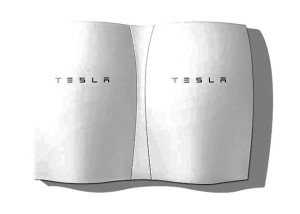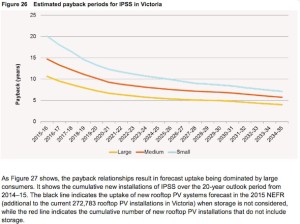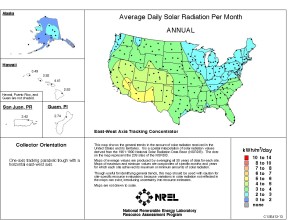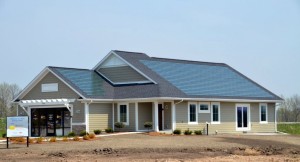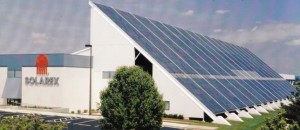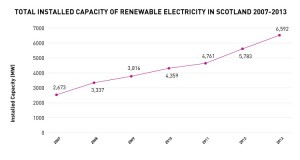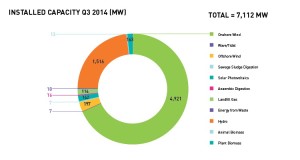A theme that has emerged in some of my recent blog posts is that many useful thoughts on renewable energy policy were formulated in the late 1970s, but that the U.S. was slow to pick up on the opportunities (e.g., see ‘A Personal View’). In the course of reviewing materials long-stored in my basement files I have found quite a few documents that were published at that time that support this theme, and I will use this blog to make sure that some of them are easily available.
The first of two documents I will post is the June 20, 1979 message sent by President Carter to the U.S. Congress that outlined “..the major elements of a national solar strategy.” It was based on the DPR (Domestic Policy Review of Solar Energy) that had been delivered to the President six months earlier. It shows that President Carter understood the importance of committing “..to a society based largely on renewable sources of energy” way back when. He deserves great credit for this foresight, which unfortunately was not shared by his successor in the White House.
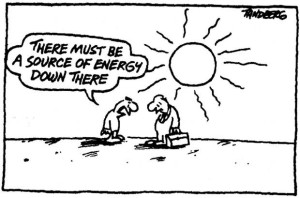
The attached document is quite long, for which I apologize, but well worth reading. It demonstrates that U.S. thinking about energy was quite advanced more than three decades ago, and that it is only in recent years, under President Obama, that we have started to seriously implement those long-ago ideas and proposed policies. It is a shame and national disgrace that it has taken so long to do this, and dispiriting to comprehend what could have been accomplished but wasn’t. However, as we say, better late than never.
Further early discussion of these ideas will be presented in the follow-up post ‘Documenting the 1970s – Part 2 of 2′.
……………………………………,,,,,
FOR IMMEDIATE RELEASE
June 20, 1979
Office of the White House Press Secretary
THE WHITE HOUSE
TO THE CONGRESS OF THE UNITED STATES:
On Sun Day, May 3, 1978 we began a national mobilization in our country toward the time when our major source~ of
energy will be derived from the sun. On that day, I committed our Nation and our government to developing an aggressive
policy to harness solar and renewable sources of energy. I ordered a major government-wide review to determine how
best to marshal the tools of the government to hasten the day when solar and renewable sources of energy become our
primary energy resources. As a result of that study, we are now able to set an ambitious goal for the use of solar energy
and to make a long term commitment to a society based largely on renewable sources of energy. In this Message I will outline
the major elements of a national solar strategy. It relies not only on the Federal government, both Executive and Congress,
but also on State and local governments, and on private industry, entrepreneurs, and inventors who have already given us significant progress in the availability of solar technologies. Ultimately, this strategy depends on the strength of the American people’s commitment to finding and using substitutes for our diminishing supplies of traditional fossil fuels.
Events of the last year — the more than 30% increase in the price of oil we import and the supply shortage caused
by the interruption of oil production in Iran — have made the task of developing a national solar strategy all the more
urgent, and all the more imperative. More than ever before, we can see clearly the dangers of continued excessive reliance on oil for our long-term future security. Our energy problem demands that we act forcefully to diversify our energy supplies, to make maximum use of the resources we have, and to develop alternatives to conventional fuels. Past governmental policies to control the prices of oil and natural gas at levels below their real market value have impeded development and use of solar and renewable resource alternatives. Both price controls and direct subsidies that the government has provided to various existing energy technologies have made it much more difficult for solar and renewable resource technologies to compete. In April of this year I announced my decision to begin the process of decontrolling domestic oil prices. Last November, I signed into law the Natural Gas Policy Act which
will bring the price of that premium fuel to its true market level over the next five years. Together, these steps will
provide much-needed incentives to encourage maximum exploration and production of our domestic resources. They provide
strong incentives to curb waste of our precious energy resources. Equally important, these steps will help solar and renewable resource technologies compete as the prices of oil and natural gas begin to reflect their real market value.
Consumers will see more clearly the benerits of investing in energy systems for which fuel costs will not escalate each year. Industry can plan and invest with more certainty, knowing the market terms under which their products will compete.
We must further strengthen America’s commitment to conservation. We must learn to use energy more effiCiently and productively in our homes, our transportation systems and our industries. Sound conservation practices go hand in hand with a strong solar and renewable resource policy. For example, a well-designed and well-insulated home is better able to make use of solar power effectively than one which is energy inefficient. We must also find better ways to burn and use coal — a fossil fuel which we have in abundance. Coal must and will be a key part of a successful transition away from oil. We must and will do more to utilize that resource. Solar energy and an increased use of coal will help in the near and mid-term to accelerate our transition away from crude oil.
But it is clear that in the years ahead we must increasingly rely on those sources of power which are renewable. The
transition to widespread use of solar energy has already begun. Our task is to speed it along. True energy security —
in both price and supply — can come only from the development of solar and renewable technologies. In addition to fundamental
security, solar and renewable sources of energy provide numerous social and environmental benefits. Energy from the sun is clean and safe. It will not pollute the air we breathe or the water we drink. It does not run the risk of an accident which may threaten the health or life of our citizens. There are no toxic wastes to cause disposal problems. Increased use of solar and renewable sources of energy is an important hedge against inflation in the long run. Unlike the costs of depletable resources, which rise exponentially as reserves are consumed, the cost of power from the sun will go down as we develop better and cheaper ways of applying it to everyday
needs. For everyone in our society — especially our low-income or fixed-income families — solar energy provides an important way to avoid rising fuel costs. No foreign cartel can set the price of sun power; no one can embargo it. Every solar collector in this country, every investment in using wind or biomass energy, every advance in making electricity directly from the sun decreases our reliance on uncertain sources of imported oil, bolsters our international trade position, and enhances the security of our Nation.
Solar energy can put hundreds of thousands of Americans to work. Because solar applications tend to be dispersed and decentralized, jobs created will be spread fairly evenly around the Nation. Job potentials span the ranges of our employment spectrum, from relatively unskilled labor to advanced engineers, from plumbers and metal workers to architects and contractors, from scientists and inventors to factory workers, from the small businessman to the large industrialist. Every investment in solar and renewable energy systems keeps American dollars working for us here at home, creating new jobs and opportunities, rather than sending precious funds to a foreign cartel.
Increased reliance on solar and renewable technologies can also increase the amount of control each one of us as individuals and each of our local communities has over our energy supplies. Instead of relying on large, centralized energy installations, many solar and renewable technologies are smaller and manageable by the homeowner, the farmer, or the individual factory or plant. By their very nature, renewable technologies are less likely to engage the kind of tension and conflict we have seen in other energy areas, such as the problems
posed by siting a very large energy facility, or trading off between surface uses of land and development of the energy minerals that might lie below that land.
Finally, solar and renewable technologies provide great international opportunities, both in foreign trade, and in the ability to work with developing nations to permit them to harness their own, indigenous resources rather than become dependent on fuels imported from other nations.
It is a mistake to think of solar energy as exotic or unconventional. Much of the technology for applying the sun’s power to everyday tasks has been in use for hundreds of years. There were windmills on our great plains long before there were high tension wires. There were factories in New England using waterpower long before the internal combustion engine was invented. In Florida, before World War II, there were more than 60,000 homes and buildings using solar hot water heaters. The Native Americans who built the great cliff dwellings of the West understood and applied solar heating principles that we have neglected in recent years, but which are available for us to use today.
These traditional and benign sources of energy fell into disuse because of a brief glut of cheap crude oil. These years are over. That inescapable fact is not a cause for despondency or a threat to our standard of living. On the contrary, it presents us with an opportunity to improve the quality of our lives, add dynamism to our economy and clean up our environment. We can meet this challenge by applying the time-tested technologies of solar power, and by developing and deploying new devices to harness the rays of the sun.
The government-wide survey I commissioned concluded that many solar technologies are available and economical today. These are here and now technologies ready for use in our homes, schools, factories, and farms. Solar hot water heating is competitive economically today against electric power in virtually every region of the country. Application of passive design principles that take into account energy efficiency
and make maximum use of the direct power of the sun in the intrinsic design of the structure is both good economics and good common sense.
Burning of wood, some uses of biomass for electricity generation, and low head hydropower have repeatedly been shown to be cost competitive.
Numerous other solar and renewable resources applications are close to economic competitiveness, among them solar space heating, solar industrial process heat, wind-generated electricity, many biomass conversion systems, and some photovoltaic applications. We have a great potential and a great opportunity to expand dramatically the contribution of solar energy between now and the end of this century. I am today establishing for our country an ambitious and very important goal for solar and renewable sources of energy. It is a challenge to our country and to our ingenuity. We should commit ourselves to a national goal of meeting one fifth – 20% – of our energy needs with solar and renewable resources by the end of this century. This goal sets a high standard against which we can collectively measure our progress
in reducing our dependence on oil imports and securing our country’s energy future. It will require that all of us examine carefully the potential solar and renewable technologies hold for our country and invest in these systems wherever we can.
In setting this goal, we must all recognize that the Federal government cannot achieve it alone. Nor is the Federal budget the only tool that should be considered in determining the courses we set to reach this goal. The extent to which solar and renewable technologies become more competitive will depend upon the cost of existing sources of energy, especially oil and natural gas. The degree to which existing solar technologies achieve widespread use in the near term will be as much if not more a function of the commitment on the part of energy users in this country to consider these technologies as it will be a function of the incentives the government is able to provide.
State and local governments must make an all-out effort to promote the use of solar and renewable resources if the
barriers now found at those levels are to be overcome. Zoning ordinances, laws governing access to the sun, housing codes,
and state public utility commission policies are not Federal responsibilities. Although the Federal government should
provide leadership, whether or not these tools are used to hinder or to help solar and renewable energy use Ultimately
depends upon decisions by each city, county and state. The potential for success in each of these areas is great; the
responsibility is likewise. I call on our Governors, our Mayors, and our county officials to join with me in helping
to make our goal a reality.
American industry must also be willing to make investments of its own if we are to reach our solar goal. We are setting
a goal for which industry can plan. We are providing strong and certain incentives that it can count on. Industry, in
turn, must accelerate and expand its research, development, demonstration, and promotional activities. The manufacturing,
construction, financing, marketing, and service skills of American business and labor are essential. Banks and financial
institutions will need to examine and strengthen their lending policies to assure that solar technologies are offered a fair
chance in the marketplace. Universities and the academic community must mobilize to find ways of bringing those solar
and renewable technologies that are still not ready for commercial introduction closer to the marketplace. Small
businesses and family farmers also have opportunities for significant use of solar and renewable resources. They, too,
must join in this effort.
Finally, each one of us in our daily lives needs to examine our own uses of energy and to learn how we can make solar
and renewable resources meet our own needs. What kind of house we buy, or whether we are willing to work in our own communities to accelerate the use of solar energy, will be essential in determining whether we reach our goal.
The Federal government also has a responsibility in providing incentives, information, and the impetus for meeting our 20%
solar goal by the year 2000. Almost every agency of the Federal government has responsibilities which touch in one way or another on solar energy. Government agencies helped finance over one million U.S. homes in 1978. By their lending policies and their willingness to assist solar investments, these agencies have significant leverage. The Tennessee Valley Authority is the Nation’s largest utility and producer of power. It has a far-reaching opportunity to become a solar showcase — to set an example for all utilities, whether public or privately owned, of how to accelerate the use of solar technologies. The Department of Defense (DOD) is a major consumer of energy and a major provider of housing. A multitude of opportunities exist for DOD to demonstrate the use of solar.
The Agency for International Development (AID) works full time in helping other countries to meet their essential needs, including energy. Solar and renewable resources hold significant potential for these countries and, through AID, we can assist in promoting the worldwide application
of these technologies.
The Department of Energy has a particularly significant responsibility in aiding the development and encouraging the use of solar energy technologies, in providing back-up information and training for users of solar, and, generally, in directing our government-funded research and development program to ensure that future solar and renewable technologies are given the resources and institutional support that they need.
As a government-wide study, the Domestic Policy Review of Solar Energy has provided a unique opportunity to draw together the disparate functions of government and determine how best to marshal all of the government’s tools to accelerate the use of solar and renewable resources. As a result of that study, the set of programs and funding recommendations that I have already made and am adding to today will provide more than $1 billion for solar energy in FY 1980, with a sustained Federal commitment to solar energy in the years beyond. The FY 1980 budget will be the highest ever recommended by any President for solar energy. It is a significant milestone for our country. This $1 billion of Federal expenditures — divided between incentives for current use of solar and renewable resources such as tax credits, loans and grants, support activities to develop standards, model building codes, and information programs, and longer term research and development — launches our Nation well on the way toward our solar goal. It is a commitment we will sustain in the years ahead.
I am today proposing the establishment of a national Solar Bank as a government corporation to be located within the Department of Housing and Urban Development (HUD). It will provide a major impetus toward use of today’s solar technologies by increasing the availability of financing at reasonable terms for solar investments in residential and commercial buildings. The Solar Bank will be funded at $100 million annually out of the Energy Security Trust Fund from revenues generated by the windfall profits tax. The Bank will be authorized to provide interest subsidies for home improvement loans and mortgages for residential and commercial buildings. It will pay up front subsidies to banks and other lending institutions Which, in turn, will offer loans and mortgages for solar investments at interest rates below the prevailing market rate. Ceilings on the amount of the loan or portion of a loan which can be subsidized will be set.
The Solar Bank will be governed by a Board of Directors including the Secretary of HUD, the Secretary of Energy, and the Secretary of the Treasury. The Board of Directors will be empowered to set the specific level of interest subsidy at rates which will best serve the purposes of accelerating the use of solar systems in residential and commercial buildings. Standards of eligibility for systems receiving Solar Bank
assistance will be set by the Secretary of HUD in consultation with the Secretary of Energy. The Solar Bank I have proposed is similar in many respects to that introduced by Congressman Stephen Neal of North Carolina. A companion bill has been introduced in the Senate by Senator Robert Morgan of North Carolina. To them. and to the co-sponsors of this legislation, we owe our gratitude for the hard work and sound conceptual thinking that has-been done on how a Solar Bank should be designed. The Solar Bank will complement the residential and commercial tax credits that I originally proposed in April 1977 and that were signed into law with the National Energy Act last November.
To provide full and effective coverage for all solar and renewable resource technologies which can be used in residential and commercial buildings, I have recently proposed two additional tax credits, to be funded out of the Energy Security Trust Fund. I am directing the Department of the Treasury to send to the Congress legislation which will provide a 20% tax credit up to a total of $2,000 for passive
solar systems in new homes. Credits will also be proposed for passive solar in commercial buildings. Passive solar applications are competitive today, but we need to provide incentives to owners, builders, architects, and contractors to ensure early and widespread use.
I am also directing the Treasury to prepare and transmit
legislation to provide a tax credit for purchasers of airtight
woodburning stoves for use in principal residences. This
credit would equal 15% of the cost of the stove, and will
be available through December 1982. There is a great potential
to expand significantly the use of wood for home heating. It
can help lower residential fuel bills, particularly as oil
and natural gas prices increase.
With these levels of assistance, hot water heating can
be made fully competitive with electricity. In many instances,
complete passive solar home designs, including solar heating
and cooling, will be economically attractive alternatives.
A strong Federal program to provide accurate and up-to-
date solar information to homeowners, builders, architects
and contractors will be coupled with these financial incentives. The Department of Energy has established a National Solar User Information Program to collect, evaluate and publish
information on the performance of solar systems throughout
the country. Expanding the government’s information dissemina-
tion systems through seminars, technical journals, state energy
offices, and the Solar Energy Research Institute will be a
major thrust of DOE’s program in 1980. The four Regional
Solar Energy Centers will become fully operational in 1980,
providing information to the general public and to groups
such as builders, contractors, and architects who will play
key roles in the acceleration of solar technologies.
To be fully effective, however, these incentives must
be combined with a determined effort by the architects,
engineers, and builders who design and construct our homes
and offices, schools, hotels, restaurants, and other buildings
we live and work in. I am calling upon thE deans of our
schools of architecture and engineering to do their part by
making the teaching of solar energy principles an essential
part or their curricula. The young men and women being
trained today must learn to regard the solar energy and overall
energy efficiency of the buildings they design as no less
important than their structural integrity. I call as well
on America’s builders to build and market homes which offer
the buyer freedom from escalating utility bills.
In the end, it will be consumers of this country who
will make the purchasing decisions that will dictate the
future of this industry_ They must have confidence in
the industry and in the products which it produces before
they will be willing to make necessary investments. To
this end. both industry and government must be ever vigilant
to assure that consumers are well protected from fraud and
abuse.
* * * * *
Significant opportunities for use of existing solar
technologies are also available in the agricultural and
industrial sectors of our economy. Industrial process heat
can be generated using solar technologies. Critical agricultural activities — fueling tractors, running irriga:ion pumps and drying crops — provide numerous opportunities for the use
of solar and other renewable resources. Biomass, gasohol, wind energy, low head hydro, and various direct solar technologies hold significant promise in the agricultural and industrial sectors. I will soon be
forwarding legislation to the Congress which will:
Provide a 25 investment tax credit for agricultural and industrial process heat uses of solar energy. This is a 15% addition to the existing investment tax credit and it will remain available through 1989. This responds directly
to the concern expressed in the Domestic Policy
Review that the tax credit currently provided in
the National Eoergy Act is set at too low a level
and expires too early to provide needed incentives.
These uses now account for about 25% of our energy
demand. Substitution of solar and it her renewable
resources for a portion of this energy would
significantly reduce our dependence on foreign oil.
Permanently exempt gasohol from the Federal gasoline
excise tax. More and more Americans are learning
that a gasohol blend of 90 gasoline and 10 alcohol
which is made from various agricultural products
or wastes — is an efficient octane-boosting fuel
for automobiles and other gasoline engines.
The existing tax incentives of the National Energy Act
will continue to stimulate the uses of these teohnologies
in the industrial and agricultural sectors.
The Department of Agriculture will have a significant
responsibility for informing farmers and other agricultural
users of energy about how solar and other renewable sources
can begin to help meet their needs. The Farmers Home Adminis-
tration and other agencies within the Agriculture Department
will continue to provide financial and technical assistance
to farmers in using solar and other renewable technologies.
The TVA is demonstrating what can be done by utilities
in helping private industries, farmers, and residential
customers apply existing solar technologies. The goal of
the TVA’s “Solar Memphis” program is to install 1,000 solar
water heaters this year by offering long-term, low-interest
loans, by inspecting solar installations, and by backing
manufacturers’ warranties. In addition, the TVA’s 1.75 million
square foot passive solar office complex in Chattanooga, Tennessee will be designed to be completely energy self-sufficient and will be a model for the nation in the use of renewable technologies in office buildings.
The Small Business Administration is now operating a
solar loan program for small manufacturers and purchasers
of solar technologies. Next year, the SBA aims to triple
the amount of funds available to small businesses under this
program over the amount originally appropriated. We will
also marshal the efforts of agencies such as the Economic
Development Administration to include solar and other renewable
resources within their assistance programs.
These activities, along with the basic information
dissemination programs of the Department of Energy, will help
increase the use of solar and other renewable resource technologies in residential, commercial, agricultural, and industrial buildings.
Finally, we will strive to increase use of solar energy
by the Federal government itself. An estimated 350 solar
systems will be placed in government facilities and buildings
over the next fifteen months. Energy audits of all large
federal buildings will be completed in 1979. DOE will con-
tinue to develop guidelines which take into account the
lifetime energy costs of various systems. The Department
of Defense, which accounts for about 72% of all government-
owned buildings, 1s playing a major role in the federal solar
buildings program. To date, DOD has over 100 solar projects
in various stages of completion, ranging in size from solar
hot water heaters in residences to solar heating and air
conditioning of Naval, Air Force and Army base facilities.
When all of the presently planned solar projeots are complete,
DOD estimates that they will be providing more than 20 billion
Btu’s of energy. The Federal government must set an example,
and I call upon the states to do likewise.
* * * *
The Domestic Policy Review recommended several important
changes in the direction and nature of the Federal research
and development program for future solar and renewable resource
technologies. It found that solar demonstration programs
for active hot water systems and high-cost centralized solar
electric technologies had been overemphasized at the expense
of those systems which hold wider potential to displace the
use of oil and natural gas.
As a result of the Domestic Policy Review, the FY 1980
budget for DOE’s research and development program for solar
and renewable energy sources was redirected toward technologies
such as photovoltaics, biomass, wind energy, and systems for
generation of process heat. To respond to these new priorities,
over $130 million in increased funding was provided in the
R&D program, an increase of 40% over FY 1979 levels.
While solar heating and cooling units are already being
used to meet the energy requirements of buildings throughout
the country, the DOE is supporting continued advances in these
products, by providing funds to industry, small business,
Federal laboratories, and the research community to reduce
the cost of solar systems and to improve performance. Improved
system design, analysis, and system-integration activities
are being carried out for active heating and cooling systems,
passive systems, and agricultural and industrial process
heating systems. The program also supports product improve-
ments for such key components as solar collectors, energy
storage units, and controls.
Photovoltaics, which permit the direct conversion of
sunlight into electriCity, hold significant promise as a solar
technology for the future. Research and development efforts
are directed at reducing the cost of photovoltaic systems.
In addition, new systems which produce hydrogen through
an electrochemical reaction can be used to produce electricity.
There is no question about our technical ability to use photo-
voltaics to generate electricity. These systems are already
used extensively to meet remote energy needs in our space
program. The main issue now is how to reduce the costs of
photovoltaics for grid-related applications such as providing
electricity to residential buildings over the next five to
ten years. The photovoltaic program involves all aspects
of research and development, from hardware components to
materials, marketing and distribution systems. The Federal
government has already made commitments to purchase $30 million
of photovoltaic systems at a specified cost per watt as a
means of stimulating private efforts to reduce the cost of
this technology.
DOE’s research and development program has also emphasized
wind energy. Our objective is the development of wind systems
which will compete cost-effectively with conventional technologies. There will also be efforts to develop wind technologies for small units suitable for farm and rural use and for large utility units.
Biomass conversion holds significant promise as a major
source of renewable energy over the coming decades. Liquid
and gaseous fuels produced from organic wastes and crops can
displace oil and natural gas both as direct combustion fuels
and as chemical feedstocks. Some biomass fuels, such as gasohol, are in use today. Others, such as liquid fuels from organic wastes, require additional research and development.
In the coming fiscal year, DOE will complete construction
of the solar power tower in Barstow, California. Such systems
could potentially displace some oil- and gas-fired generators.
The DOE solar thermal program is also concentrating on reducing
to near commercial levels the costs of distributed receiver
systems by 1983 and similarly reducing the future costs of
central receiver systems. This program supports R&D efforts
in advanced space heating and cooling, photovoltaic concen-
tration, and high temperature industrial heat applications.
The oceans are another potential source of solar energy.
We will pursue research and development efforts directed toward
ocean thermal energy conversion, and other concepts such as
the use of salinity gradients, waves, and ocean currents.
DOE is working with the National Aeronautics and Space
Administration to evaluate the concept of a solar power
satellite system (SPS) which would capture solar energy in
space for transmission to earth. A determination will be
made in January 1981 on whether this system should proceed
to the exploratory research stage.
DOE will undertake intensified efforts involving solar
energy storage and basic solar energy research. In the basic
research area, emphasis is being placed on the development
of new materials to better use or convert the sun’s energy,
solar photochemistry (including the possibility of using
electrochemical cells to convert the energy of sunlight into
electricity and/or fuels) and research on artificial photo-
synthesis.
In Fiscal Year 1980 we will begin building a new 300-acre solar research facility for the Solar Energy Research Institute at Golden, Colorado. This institute, along with
four regional solar centers established across the country,
will help provide a focus for research and development
activities and will become information centers for individuals
and firms who market or install solar equipment.
In addition to DOE’s research and development activities,
several other agencies will continue to support commercial
introduction of solar technologies as they become available.
AID, TVA and the Department of Agriculture now have and will
continue to have significant responsibilities in the demon-
stration of new solar and renewable resource systems.
The Domestic Policy Review identified numerous specific
program suggestions, many of which I believe can and should
be implemented. Over the course of the coming weeks, I will
be issuing a series of detailed directives to the appropriate
agencies to implement or consider recommendations in
accordance with my instrUctions.
Some of these suggestions involve detailed budget issues
which should be taken up in our normal budget planning
process. In order to provide much-needed flexibility to DOE
to respond to these — and other — suggestions, I am directing
the Office of Management and Budget to provide an additional
$100 million to DOE for use on solar programs beyond that
which had previously been identified for the FY 1981 base
program.
…………..
An essential element of a successful national solar
strategy must be a clear central means of coordinating the
many programs administered by the numerous agencies of
government which have a role in accelerating the development
and use of these energy sources. I am today directing that
the Secretary of Energy establish a permanent, standing
Subcommittee of the Energy Coordinating Committee (ECC) to
monitor and direct the implementation of our national solar
program. The ECC membership includes the major agencies
which have responsibilities for solar and renewable resource
use. By using this existing mechanism, but strengthening
its focus on solar and renewable activities, we can provide
an immediate and direct means to coordinate the Federal solar
effort. The Subcommittee will report on a regular basis to
the ECC, and through it directly to me, on the progress of
our many and varied solar activities. The Subcommittee will
be able to identify quickly any problems that arise and the
ECC will provide a forum to resolve them. Since the member-
ship of the ECC includes key agencies of the Executive Office
of the President, especially the Office of Management and
Budget, the Special Assistant to the President for Consumer
Affairs, the Council on Environmental Quality, and the
Domestic Policy Staff, direct and easy access to my staff
and Members of the Cabinet is assured.
The Standing Subcommittee of the ECC has an extremely
important responsibility. I am expecting it to provide
the leadership and the day-to-day coordinating function
which will be essential as we strive to meet our national
solar goal.
…………
We are today taking an historic step. We are making a
commitment to as important a goal as we can set for our
Nation — the provision of 20% of our energy needs from solar
and renewable sources of energy by the year 2000.
We are launching a major program — one which requires
and has received a significant commitment from the Federal
government to accelerate the development and use of solar
technologies.
We are marshalling the best that the agencies of government
can provide and asking for the commitment of each of them,
in their diverse and numerous functions, to assist our country
in meeting our solar goal.
The stakes for which we are playing are very high. When
we speak of energy security, we are in fact talking-about
how we can assure the future economic and military security
of our country — how we can maintain the liberties and freedoms which make our Nation great.
In developing and implementing a national solar strategy
we are taking yet another critical step toward a future which
will not be plagued by the kinds of energy problems we are
now experiencing, and which will increase the prospects of
avoiding worse difficulties.
We have set a challenge for ourselves. I have set a
challenge for my Presidency. It will require the best that
American ingenuity can offer, and all the determination which
our society can muster. Although government will lead, inspire,
and encourage, our goal can be achieved only if each American
citizen, each business, and each community takes our solar
goal to heart.
Whether our energy future will be bright — with the
power of the sun — or whether it will be dim, as our fossil
resources decline, is the choice that is now before us. We
must take the path I have outlined today.~
JIMMY CARTER
THE WHITE HOUSE,
June 20, 1979.


